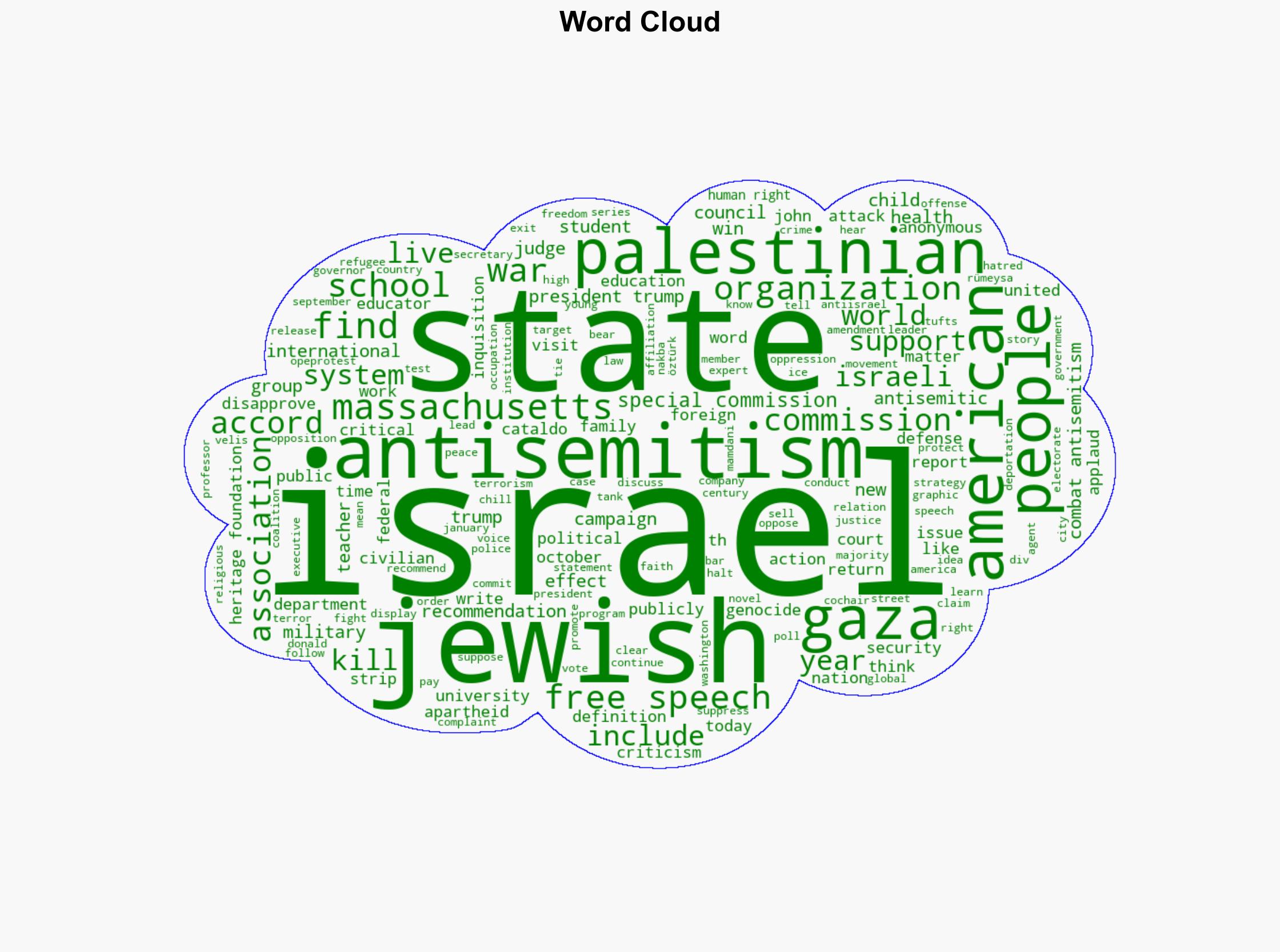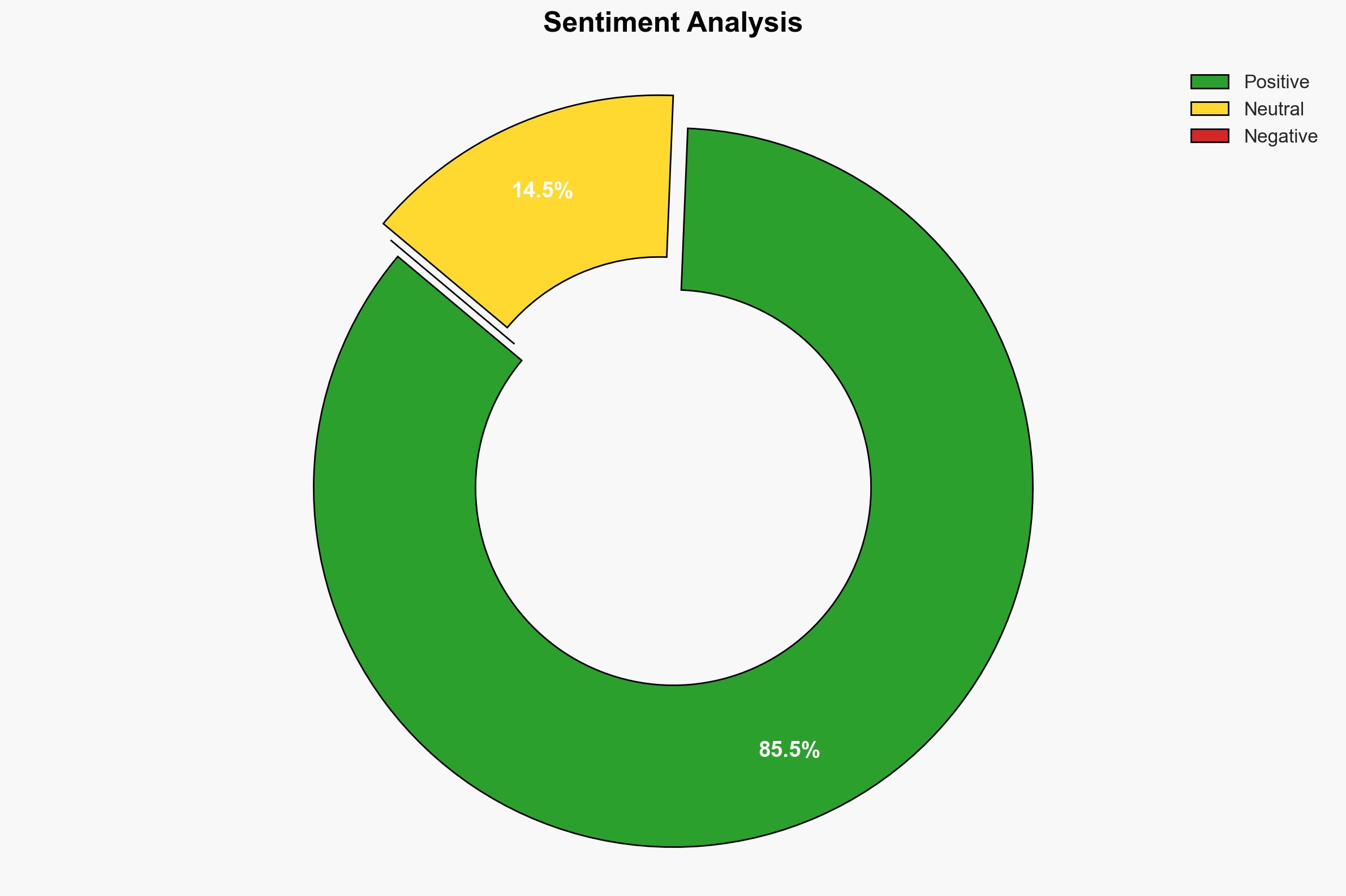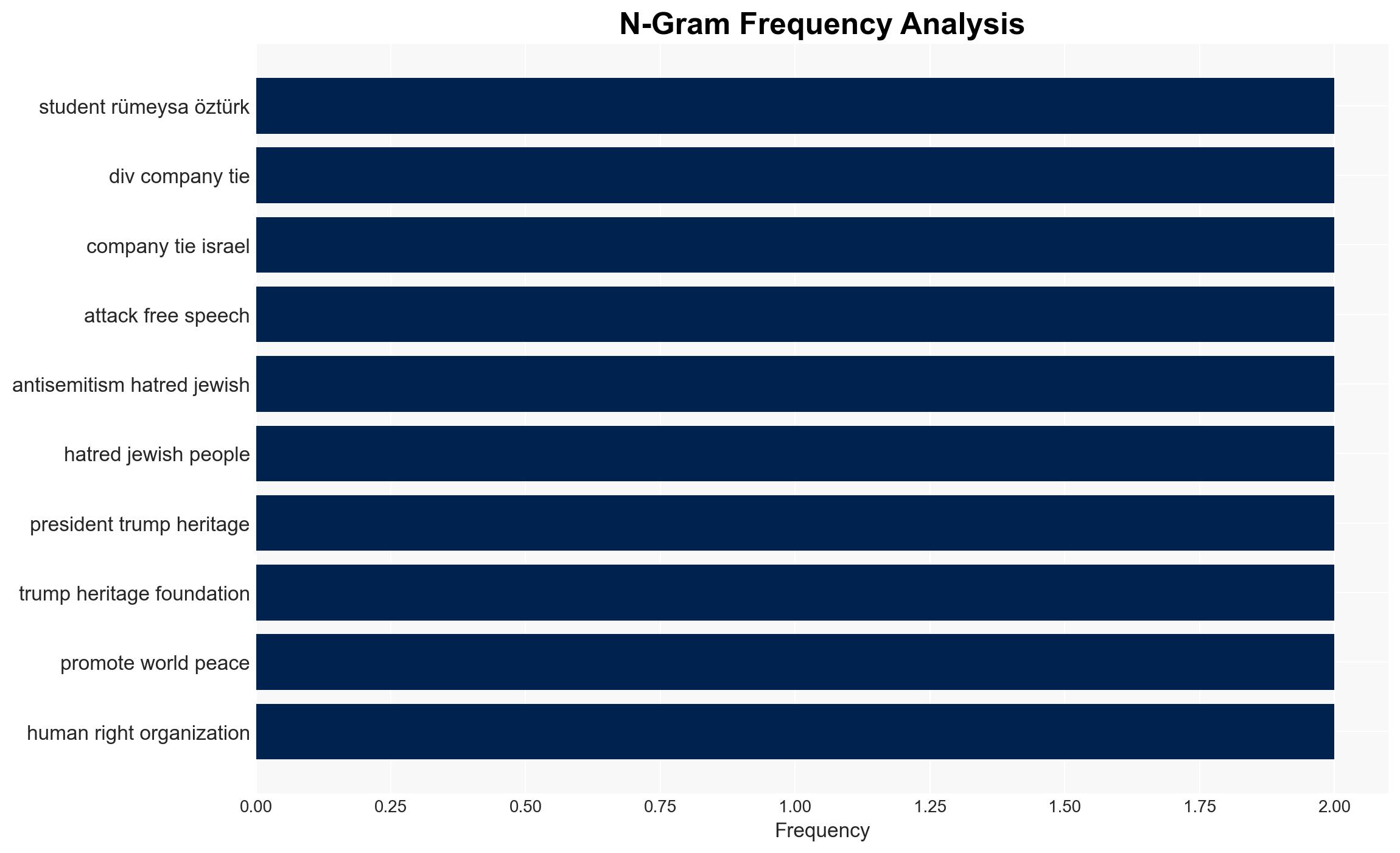New Strategy Emerges to Counteract Free Speech Amid Rising Antisemitism Concerns
Published on: 2025-11-27
AI-powered OSINT brief from verified open sources. Automated NLP signal extraction with human verification. See our Methodology and Why WorldWideWatchers.
Intelligence Report: An Unexpected Con To End Free Speech
1. BLUF (Bottom Line Up Front)
The current strategy to combat antisemitism, as outlined by the Heritage Foundation and supported by former President Trump, is perceived as a political maneuver to suppress pro-Palestinian movements and criticism of the US-Israel alliance. This approach could significantly impact free speech and civil liberties in the United States. The most likely hypothesis is that this strategy aims to redefine antisemitism to include criticism of Israel, thereby limiting public discourse. Overall confidence in this assessment is moderate, given the complexity and potential biases in the source material.
2. Competing Hypotheses
- Hypothesis A: The strategy to combat antisemitism is primarily a political tool to suppress criticism of Israel and pro-Palestinian movements. Supporting evidence includes the alignment with political agendas and the redefinition of antisemitism. Key uncertainties involve the actual implementation and enforcement of this strategy.
- Hypothesis B: The strategy is a genuine effort to address rising antisemitism and protect Jewish communities. This is supported by the involvement of organizations focused on combating antisemitism. Contradicting evidence includes the potential misuse of the strategy for political gains and suppression of free speech.
- Assessment: Hypothesis A is currently better supported due to the political context and the potential for misuse as indicated by the source. Key indicators that could shift this judgment include changes in policy implementation and reactions from civil liberties organizations.
3. Key Assumptions and Red Flags
- Assumptions: The strategy will be implemented as described; public and political reactions will align with historical patterns; the definition of antisemitism will be expanded to include criticism of Israel.
- Information Gaps: Specific details on how the strategy will be enforced and the legal frameworks supporting it; reactions from international bodies and allies.
- Bias & Deception Risks: Potential bias from sources with political agendas; risk of deception in the portrayal of the strategy’s intentions and effects.
4. Implications and Strategic Risks
This development may lead to increased polarization within the United States and strain international relations, particularly with Middle Eastern countries. It could also influence global discourse on human rights and freedom of speech.
- Political / Geopolitical: Potential escalation in US-Israel relations and tensions with pro-Palestinian states.
- Security / Counter-Terrorism: Possible radicalization of groups feeling suppressed, leading to increased security threats.
- Cyber / Information Space: Heightened information warfare and propaganda efforts from both sides of the debate.
- Economic / Social: Social unrest and economic implications from potential boycotts or sanctions related to the strategy.
5. Recommendations and Outlook
- Immediate Actions (0–30 days): Monitor legislative developments and public reactions; engage with civil liberties organizations to assess impacts on free speech.
- Medium-Term Posture (1–12 months): Develop resilience measures to protect free speech and civil liberties; foster dialogue between opposing groups to mitigate polarization.
- Scenario Outlook:
- Best: Strategy is revised to balance antisemitism concerns with free speech protections.
- Worst: Widespread suppression of dissent and increased domestic unrest.
- Most-Likely: Continued debate and legal challenges, with incremental policy adjustments.
6. Key Individuals and Entities
- Donald Trump
- Heritage Foundation
- Rümeysa Öztürk
- Amnesty International
- Omer Bartov
- Human Rights Watch
- International Court of Justice
7. Thematic Tags
Structured Analytic Techniques Applied
- Cognitive Bias Stress Test: Expose and correct potential biases in assessments through red-teaming and structured challenge.
- Bayesian Scenario Modeling: Use probabilistic forecasting for conflict trajectories or escalation likelihood.
- Network Influence Mapping: Map influence relationships to assess actor impact.
Explore more:
National Security Threats Briefs ·
Daily Summary ·
Support us





